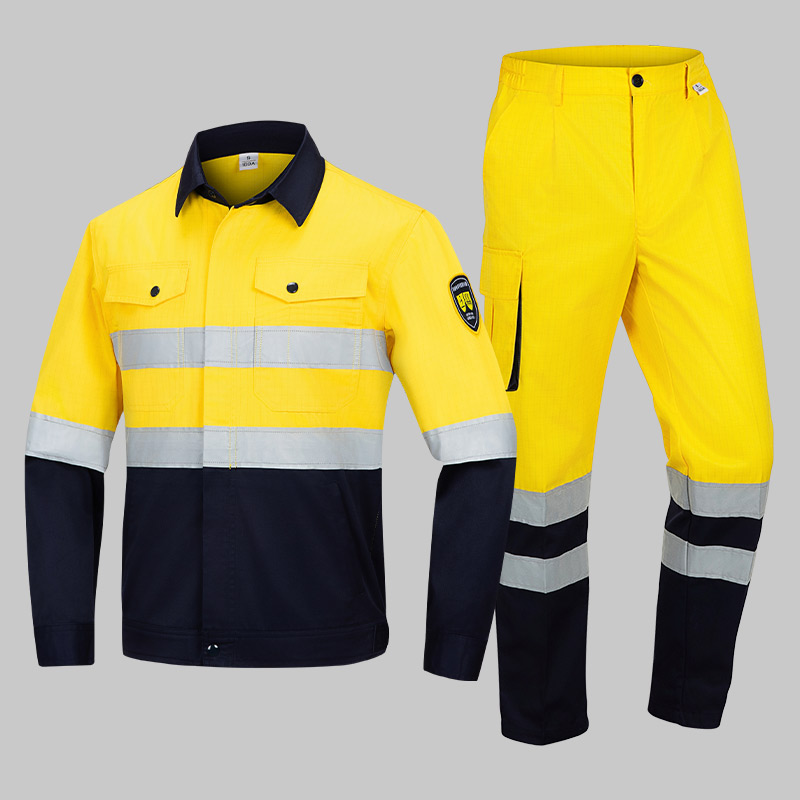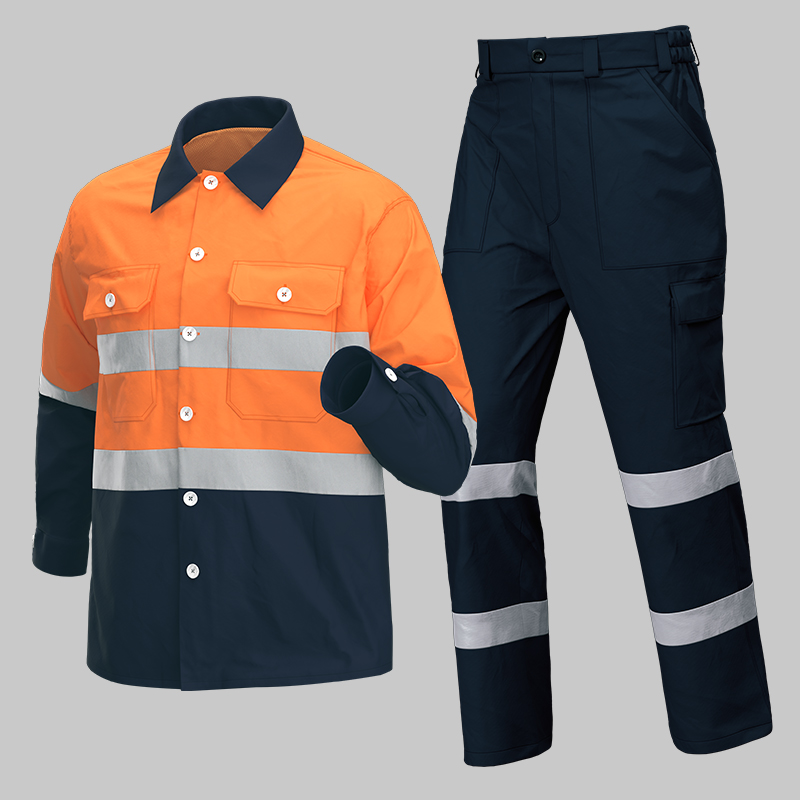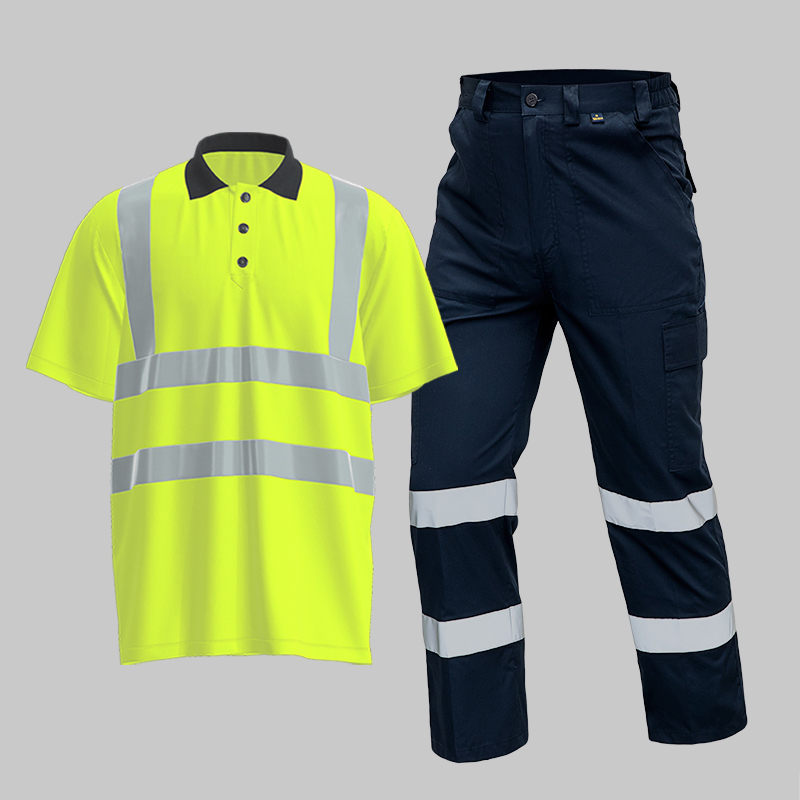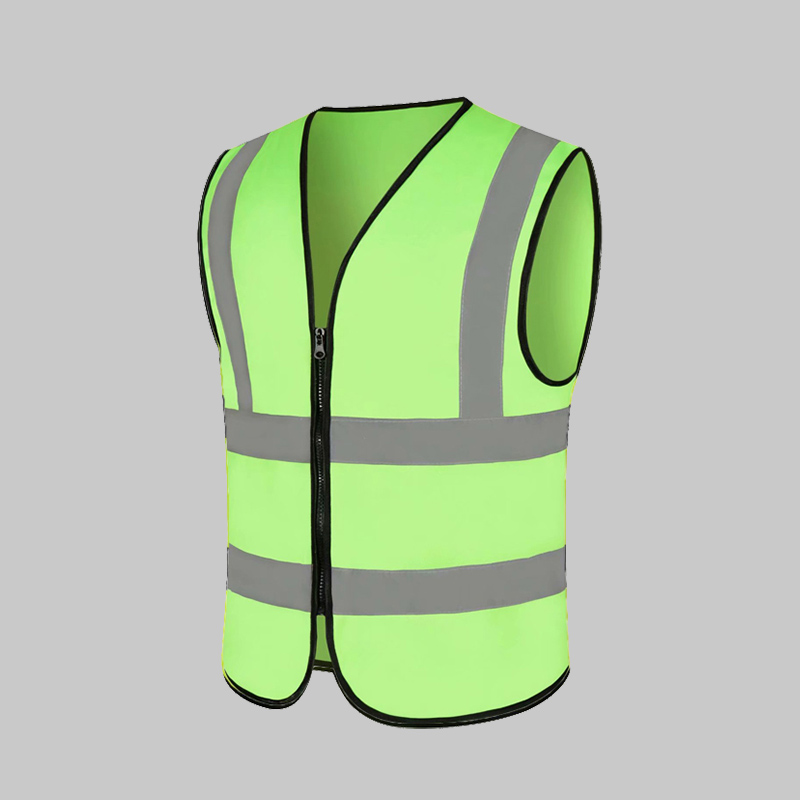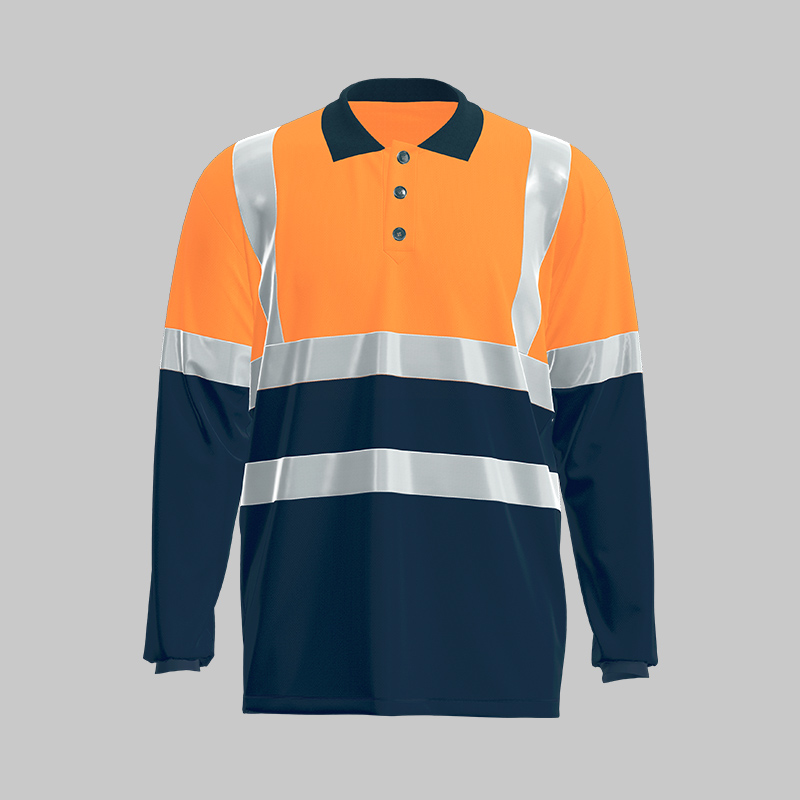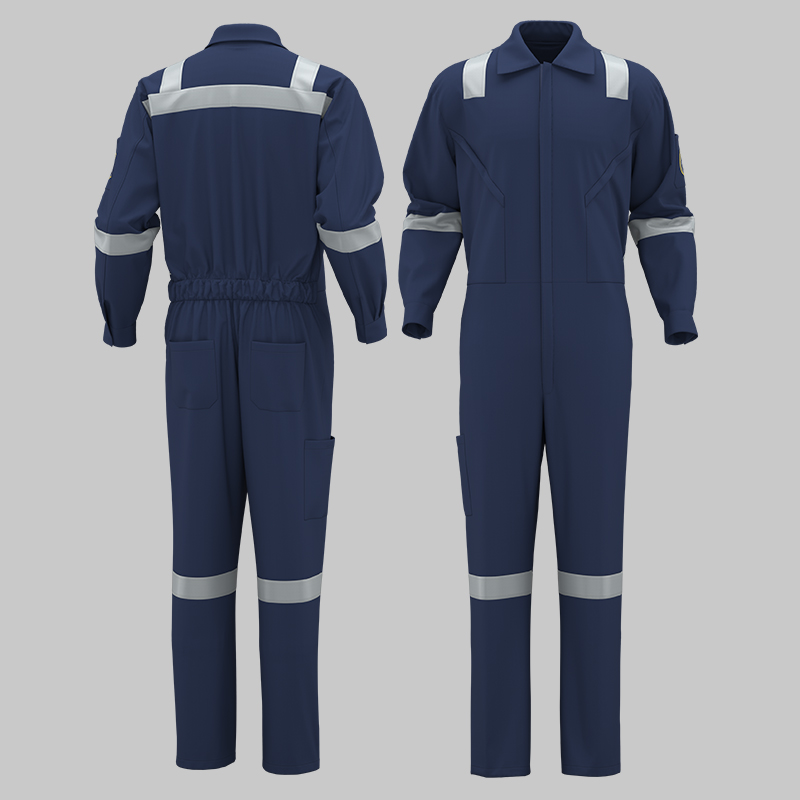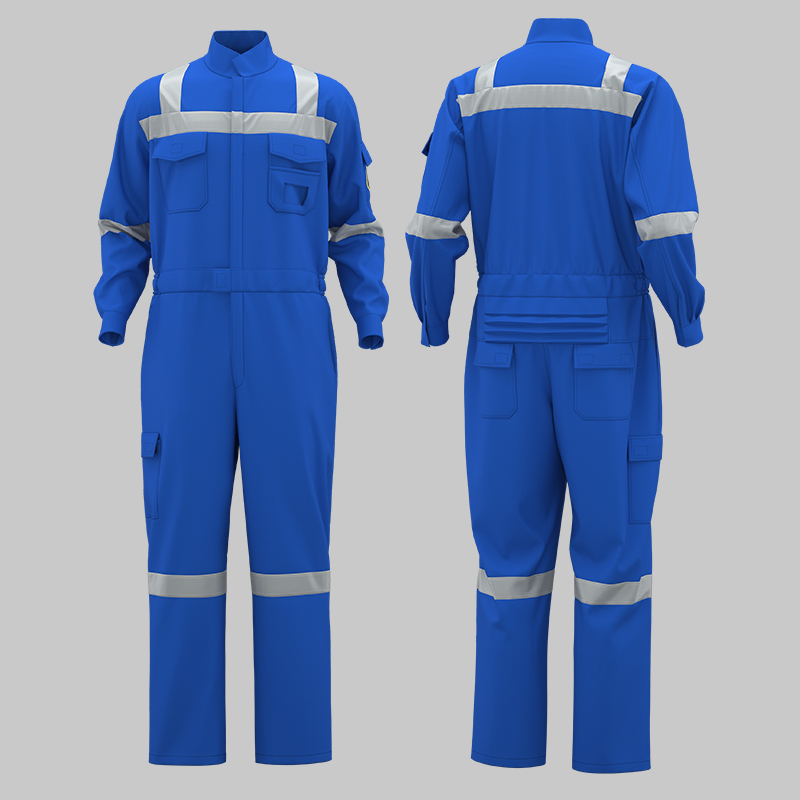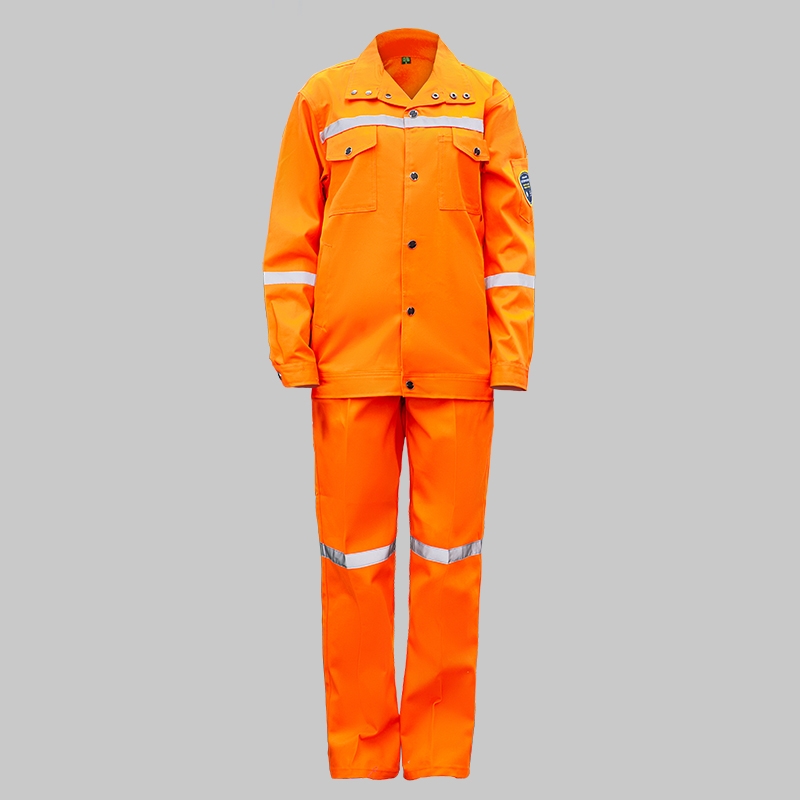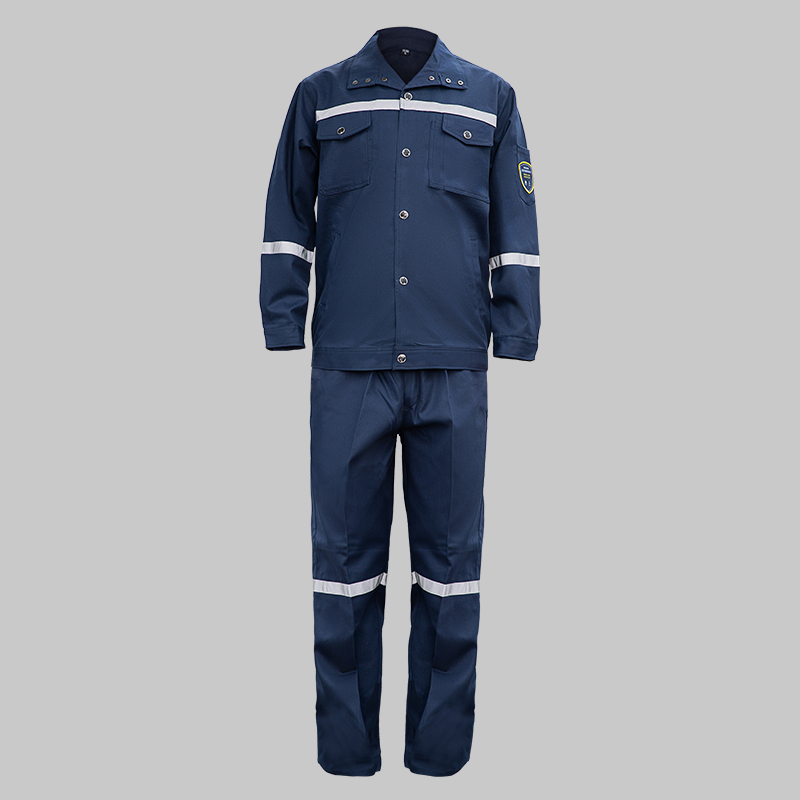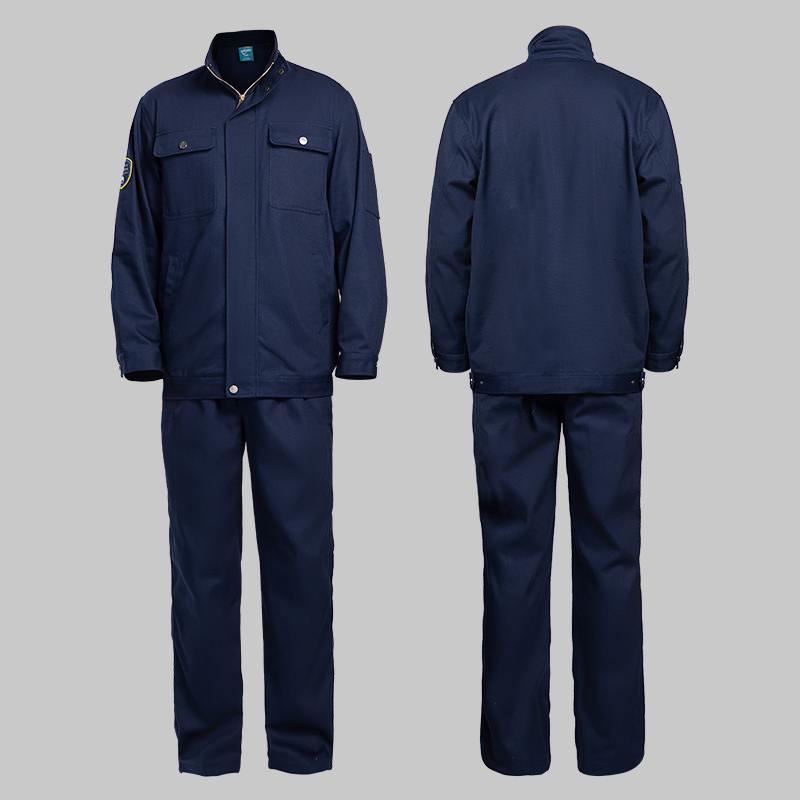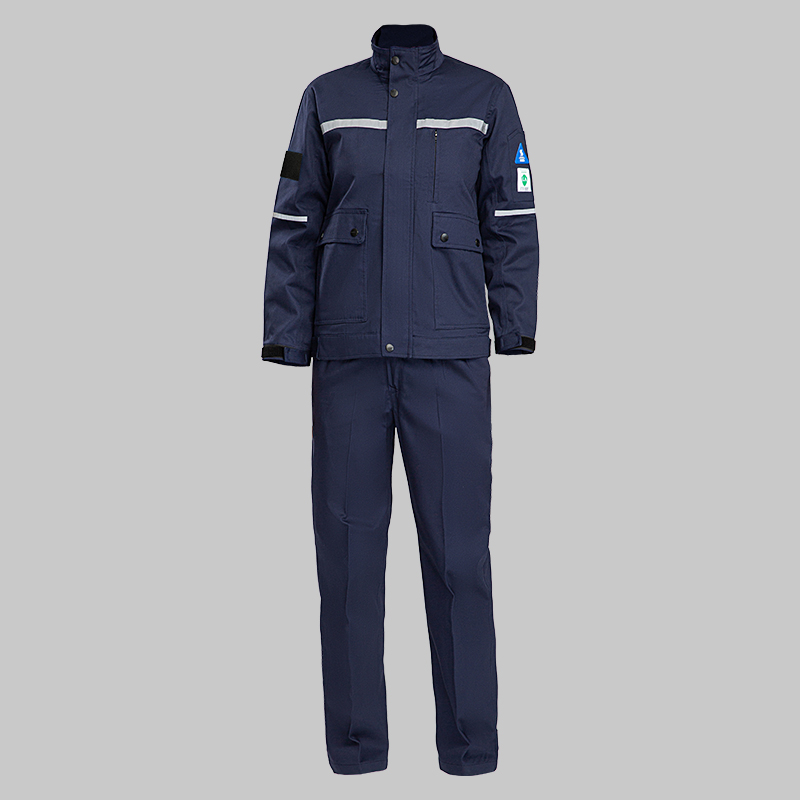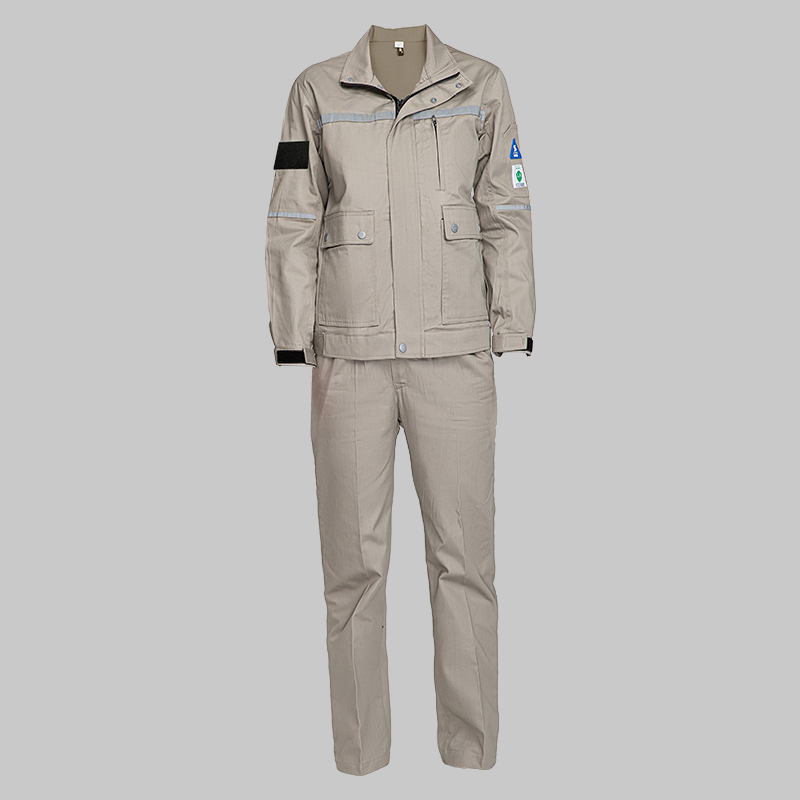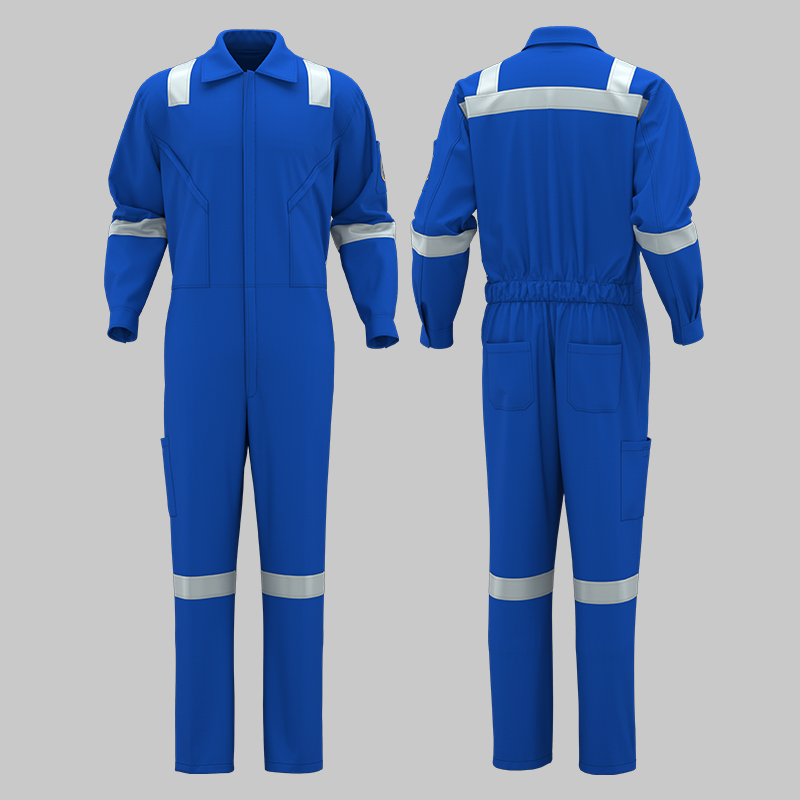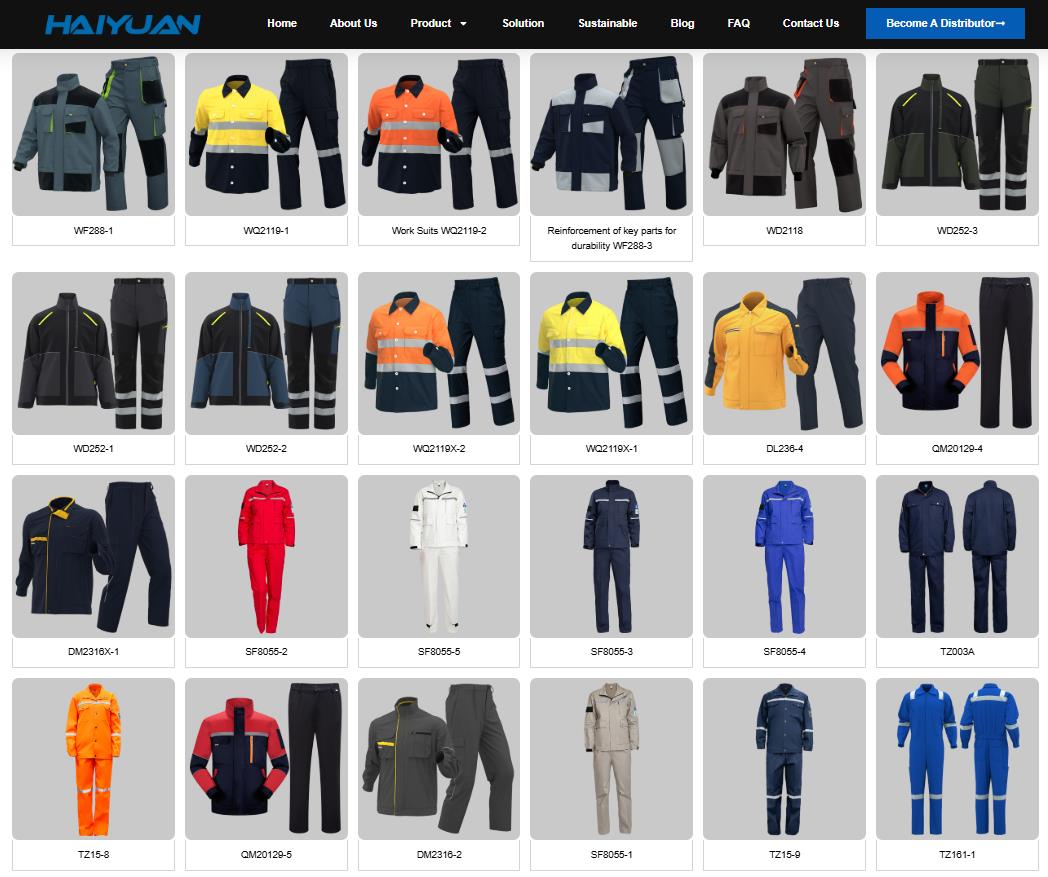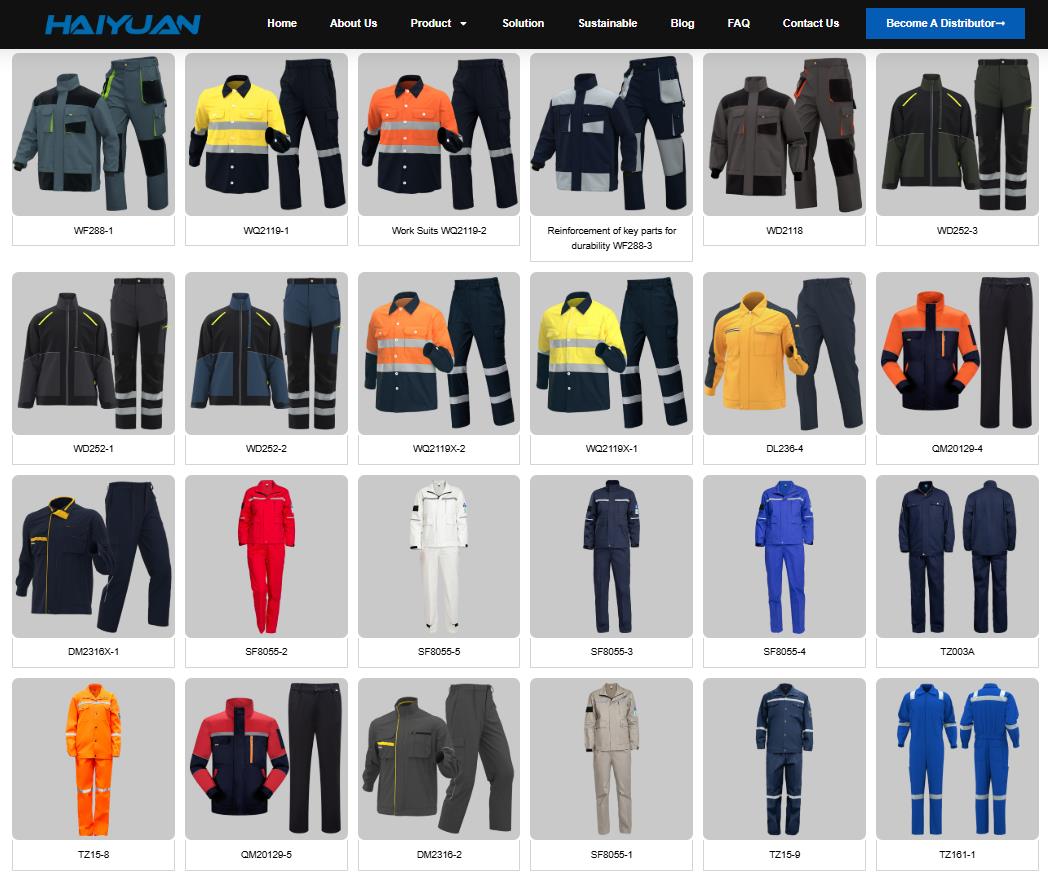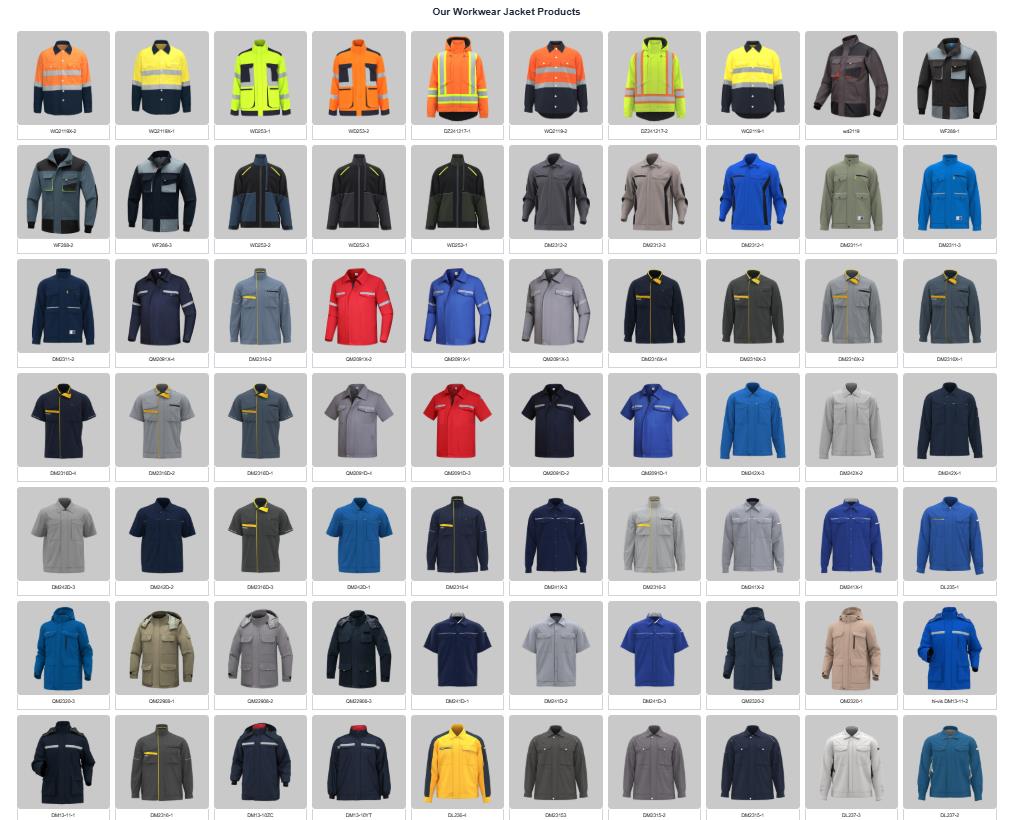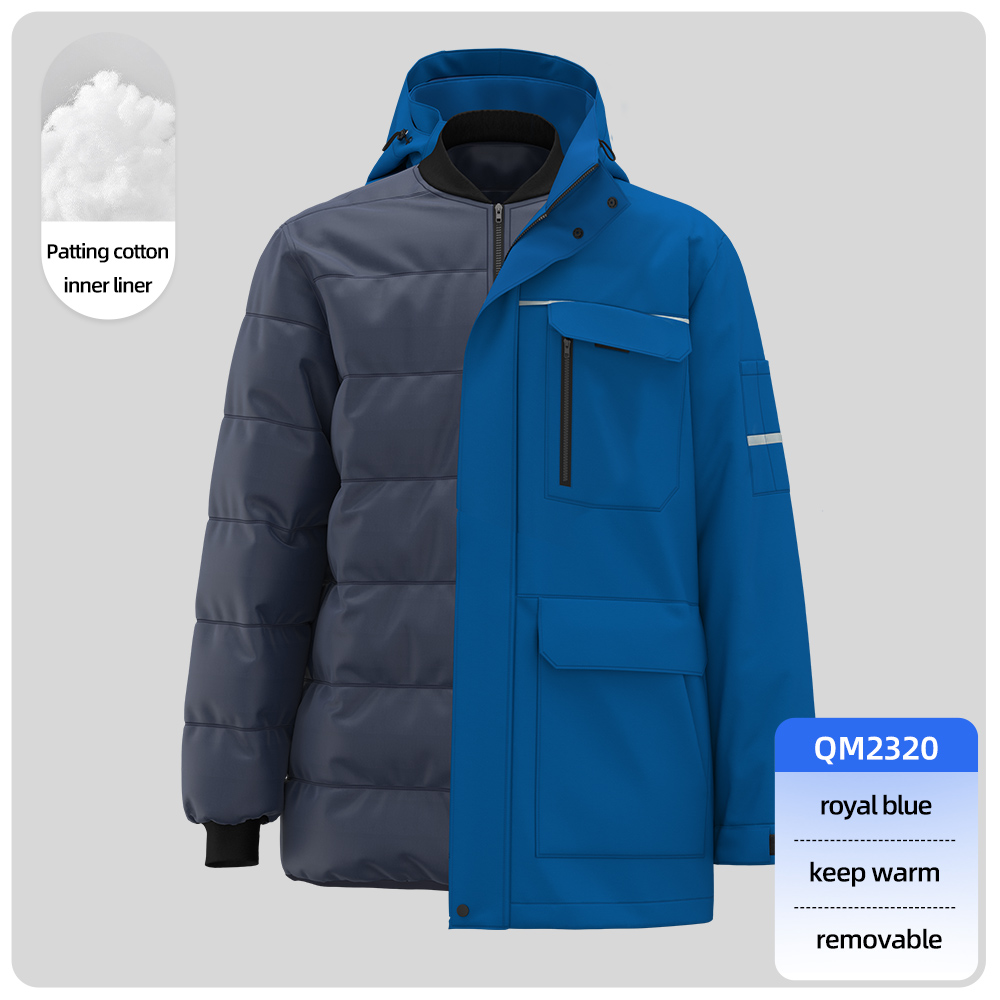Here’s a comprehensive guide to purchasing workwear for sanitation companies, prioritizing safety, durability, functionality, and compliance:
1. Safety & Compliance Essentials
-
High-Visibility (Hi-Vis) Gear:
-
Standard GB 20653-2020 “Protective clothing – Occupational high-visibility warning clothing”, GB/T 18833-2012 and other standards certification, suitable for roadside workers (such as work jackets,work vests, work pants).
-
Reflective Tape: 360° visibility; silver for day, fluorescent yellow/orange for low light.
-
- The high-visibility reflective strips of the above work clothes comply with the national standard GB 20653-2020 “Protective clothing – Occupational high-visibility warning clothing”, ensuring 360° visibility. The reflective material surrounds the torso and limbs, increasing the visual safety distance by 2-3 times and enhancing nighttime visibility.
- 100% cotton content, environmentally friendly and skin-friendly, soft and stylish, delicate touch, breathable and moisture-absorbent.
- Carefully selected fabrics, 30% more breathable, 3 times more absorbent, so that sweat does not stay.
- Customize as you like to highlight and enhance the corporate image.
-
Cut/Puncture Resistance:
-
Materials: Look for 600D+ polyester, ripstop fabrics, or Kevlar®-blended fabrics (gloves, sleeves).
-
-
Biological Hazard Protection:
-
Fluid-resistant fabrics (e.g., polyester-cotton blends with DWR coating).
-
Coveralls (Type 3-6 EN 14325) for waste processing/liquid exposure.
-
-
Flame Resistance:
-
FR-rated gear (NFPA 2112 or GB8965.1-2020) for workers near compactors/incinerators.
-
- The above work clothes are flame-retardant protective clothing produced by Haiyuan Manufacturer and inspected by a third-party organization. The inspection and testing are based on GB8965.1-2020 “Protective Clothing Flame-retardant Clothing”; inspection and testing items: fabric flame retardancy. Fabric breaking strength, fabric tearing strength, fabric moisture permeability, fabric thermal stability, fabric formaldehyde content, fabric pH value, sewing thread strength, sewing thread flame retardancy, accessories, auxiliary materials and linings, styles, structures, sizes and specifications, seam strength, finished product size change rate after washing, and logos, a total of 17 items.
- Inspection and testing conclusion: According to GB8965.1-2020 “Protective Clothing Flame-retardant Clothing” and “Special Labor Protection Products Safety Sign Product Testing and Inspection Specifications”, after inspection and testing, it is comprehensively judged to be qualified.
- Main fabric composition: 100(%) cotton.
- Function: Fireproof and flame retardant, does not burn, melt or drip when encountering open flames, does not pill, does not fade, is durable and wear-resistant, and the cotton fabric is soft and comfortable.
- 3D three-dimensional cutting with adjustable cuffs and adjustable hem.
- Reflective material needs to wrap around the torso and limbs, increasing the visual safety distance by 2-3 times and enhancing nighttime visibility.
- Sizes S/160, M/165, L/170, XL/175, 2XL/180, 3XL/185, 4XL/190.
- Practical industries: steel mills, metallurgy, electric welding, machinery industry, oil fields, etc.
2. Key Garments & Features
| Item | Requirements |
|---|---|
| Work Jackets | Waterproof/windproof, Hi-Vis, underarm vents, reinforced elbows/shoulders. |
| Work Pants | Ripstop fabric, gusseted crotch, knee pad pockets, multiple tool loops. |
| Coveralls | Breathable, fluid-resistant, with ankle/cuff seals; detachable hood options. |
| Rain Gear | PVC or PU-coated; sealed seams; Class 3 Hi-Vis. |
| Gloves | Cut-resistant (ANSI Cut Level A3+), grip coating, extended cuffs. |
| Footwear | Steel/composite toes, slip/oil-resistant soles, waterproof (e.g., ASTM F2413). |
3. Durability & Maintenance
-
Fabric Quality: Minimum 6.5 oz/yd² fabric weight; reinforced stress points (knees, seat, elbows).
-
Washability: Industrial laundering tolerance (≥65 washes without fading/degradation).
-
Colorfastness: Choose dark colors (navy, black) to hide stains; ensure dyes resist UV fading.
4. Comfort & Fit
-
Breathability: Mesh linings, vented backs, moisture-wicking fabrics.
-
Ergonomics: Articulated knees/pre-curved sleeves for mobility; adjustable waistbands.
-
Layering: Allow room for thermal wear in cold climates.
5. Budget & Value
-
Cost per Wear: Prioritize garments with ≥1-year lifespan. Avoid cheap synthetics that degrade quickly.
-
Bulk Discounts: Negotiate with suppliers for 50+ unit orders.
-
Warranty: Seek 6–12-month warranties against defects.
6. Brand & Supplier Checklist
-
Certifications: Verify ISO 9001, Oeko-Tex® (chemical safety).
-
Customization: Screen printing/embroidery for company logos (position on chest/back for visibility).
-
Reputable Suppliers:
7. Employee Input & Testing
-
Pilot Programs: Test 3–5 garment options with crews for 30 days.
-
Feedback: Survey workers on fit, comfort, and functionality. Adjust based on their needs.
Sample Purchase Plan
| Item | Qty | Key Specs | Est. Cost |
|---|---|---|---|
| Hi-Vis Jacket | 10 | GB 20653-2020, waterproof, 2 pockets | $40–$65 |
| Work Pants | 50 | Ripstop, knee pad pockets | $40–$60 |
| Cut-Resistant Gloves | 100 | ANSI Cut A4, nitrile coating | $12–$18/pair |
| Safety Boots | 50 | Composite toe, EH rated | $120–$160 |
Final Tips
-
Regulatory Compliance: Audit gear against OSHA 1910.132 (PPE) and local DOT visibility rules.
-
Sustainability: Opt for eco-friendly fabrics (recycled polyester) or take-back recycling programs.
-
Seasonal Kits: Rotate summer (lightweight) and winter (insulated) uniforms.
Investing in high-quality workwear reduces injury risks, boosts morale, and projects professionalism—ultimately saving costs through lower turnover and fewer incidents.

